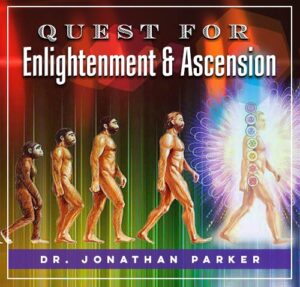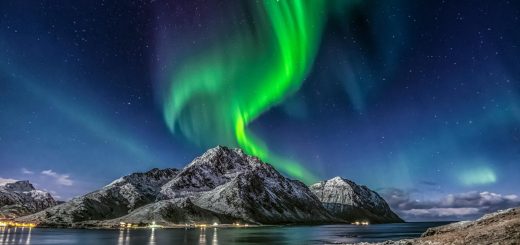What Lies Beyond Our Universe? Exploring the Infinite

Before diving in, please note: This post is for informational purposes only. If you’d like to know more about how we approach topics, feel free to check out our friendly Disclaimer Page.
Hey there, amazing readers! 🖐️ Just a quick note: yes, we know there are a lot of ads here. Trust us, we get it—it’s not the prettiest look, but they help us keep this blog alive and kicking. Those pesky little ads cover the costs of all the behind-the-scenes magic, from hosting and tech stuff to creating content we hope you’ll love.
We’re committed to delivering quality posts, and your support (even just sticking around despite the ads) means everything to us. So, bear with us, and thanks for helping us keep the good vibes rolling. Now, on to the fun stuff! 😉
TRANSLATE BUTTON AT THE END OF THE ARTICLE
A Quick Overview
What lies beyond our universe?
This question has intrigued humanity for centuries, sparking the imaginations of scientists, philosophers, and curious minds alike.
The cosmos is a vast, mesmerizing expanse, but when we ponder what may exist beyond the final frontier of our understanding, we open ourselves to a whirlwind of possibilities.
In this article, we’ll embark on a journey through the known and unknown, exploring theories and concepts that push the boundaries of our understanding.
Buckle up; it’s going to be a fascinating ride!
Introduction: The Fascination of the Unknown Cosmos
Ever looked up at the night sky, filled with stars, and wondered what’s out there?
I certainly have.
The sheer vastness of space and the mysteries it holds keep our minds buzzing.
When I was a kid, I used to think of the universe as a giant canvas painted with the light of countless stars.
Each twinkling speck seemed to whisper secrets of far-off worlds.
As I grew older, I realized the cosmos is more than just a pretty picture; it’s a complex, multifaceted entity filled with wonder.
Humans are naturally curious.
This quest for knowledge drives us to ask questions about our origins, our place in the universe, and what might lie beyond what we can observe.
From ancient civilizations gazing at the stars to today’s astronomers peering through powerful telescopes, the search for answers about the cosmos has never ceased.
The unknown is like a tantalizing book with many blank pages, inviting us to fill them with discoveries.
So, what exactly is the universe?
How did it come to be?
And what might exist outside of our observable reality?
These questions form the backbone of our exploration into what lies beyond.
Let’s dive into the fascinating journey of understanding our universe and what could be lurking in the cosmic shadows.
What Is the Universe? A Brief Overview of Our Realm
To grasp the enormity of what lies beyond, we first need to understand what the universe is.
It’s not just a collection of stars, planets, and galaxies; it’s everything we can perceive and comprehend.
The universe contains all of space-time, matter, energy, and the physical laws governing them.
The observable universe stretches approximately 93 billion light-years in diameter.
That includes galaxies, stars, and cosmic microwave background radiation left over from the Big Bang.
Imagine trying to wrap your head around that!
Every speck of light you see at night represents an entire solar system, and some are so distant that their light has taken millions or even billions of years to reach us.
Our universe is expanding.
That’s a fact that’s been established since Edwin Hubble observed that distant galaxies are moving away from us.
This expansion gives rise to mind-boggling questions about its boundaries.
Is there an edge?
Explore the Path to Spirituality and Enlightenment – Start Here.
If we could travel far enough, what would we encounter?
The universe is also composed of various celestial bodies, including stars, planets, comets, and asteroids.
It is governed by forces such as gravity, electromagnetism, and nuclear forces.
Each of these elements plays a crucial role in the structure and behavior of the cosmos.
In a nutshell, the universe is not just a backdrop for our lives; it’s an intricate tapestry of physical phenomena and mysteries just waiting to be unraveled.
The Concept of Multiverses: More Than One Universe?
If you think our universe is vast, wait until you hear about the concept of multiverses.
The idea posits that there could be multiple, perhaps infinite, universes coexisting alongside ours.
Each universe could have its own laws of physics, dimensions, and even entire realities.
The notion of a multiverse stems from various theories in physics.
One prominent theory, inflationary cosmology, suggests that the rapid expansion right after the Big Bang could have created bubbles of space-time, each forming its own universe.
Imagine a cosmic foam, where each bubble represents a different universe.
Each one could be entirely different, with different physical laws or constants.
Another intriguing aspect is the quantum multiverse.
According to quantum mechanics, every possible outcome of a quantum event can occur in its own separate universe.
So, in one universe, you might be reading this article, while in another, you could be a time-traveling superhero!
The multiverse theory forces us to reconsider our understanding of existence.
If multiple universes exist, what does that mean for our perception of reality?
Are we just one version of countless possibilities?
While the idea sounds like science fiction, it’s a serious area of study that is gaining traction among physicists.
However, proving the existence of these other universes is a challenge, as they may be beyond our ability to observe.
Yet, the possibility alone fills the imagination with wonder.
The Limits of Our Universe: What Do We Know?
So, what do we actually know about the limits of our universe?
Well, that’s a bit like asking a toddler to explain the rules of a complex board game.
There’s plenty of confusion and many unknowns!
First off, we know that the universe is expanding.
But what lies beyond the observable universe?
As we look out into space, we can only see a portion of it.
Beyond our observational capabilities, the universe may continue infinitely or might come to an end.
Some speculate it could curve back on itself, creating a kind of cosmic loop.
Additionally, there are regions of space we can’t observe due to the limitations of light.
Some areas may be so remote that their light hasn’t reached us yet.
This phenomenon creates a ‘cosmic horizon.’ Anything beyond that horizon remains hidden from our view and understanding.
We also face challenges in comprehending the full extent of dark matter and dark energy.
Together, they comprise about 95% of the universe, yet we know little about them.
The universe is predominantly dark, filled with invisible forces that shape its structure and dynamics.
There’s also the issue of cosmic inflation, which occurred after the Big Bang.
This rapid expansion created the uniformity and smoothness seen in the universe today.
But what happened during those first moments?
What came before?
The answers remain tantalizingly out of reach.
In essence, our grasp of the universe’s limits is like holding onto a piece of string dangling from a much larger fabric.
The more we learn, the more we realize how little we truly understand.
The Big Bang Theory: The Birth of Everything We Know
When speaking of the universe’s origins, the Big Bang Theory is the reigning champ.
This widely accepted model explains how our universe began approximately 13.8 billion years ago.
Picture it like a cosmic balloon, inflating rapidly from a singular point of infinite density.
Before the Big Bang, it’s hard to say what existed, as time and space, as we know them, didn’t exist.
At that moment of creation, the universe underwent extreme temperatures and densities before starting to expand.
As it cooled, particles began to form, eventually leading to atoms and the first elements—hydrogen and helium.
As the universe continued to expand, gravity pulled these atoms together, forming stars and galaxies.
The formation of celestial structures gave rise to the intricate web we see today.
Our own solar system is just one of countless formations born from this cosmic event.
The Big Bang Theory is supported by several key observations.
The cosmic microwave background radiation, a faint glow left over from the initial explosion, serves as a critical piece of evidence.
Additionally, the observed redshift of distant galaxies confirms the ongoing expansion of the universe.
While the theory offers a comprehensive narrative for understanding the universe’s origins, it raises questions about what happened before the Big Bang.
Was there a prior universe?
Or is there a cyclical nature to existence?
These questions spark ongoing debates in cosmology.
In short, the Big Bang Theory is more than just the starting point of the universe; it’s a glimpse into the enigmatic cycles of creation and existence that continue to fascinate us.
Dark Matter and Dark Energy: The Invisible Forces
Let’s talk about dark matter and dark energy.
These two cosmic mysteries might sound like something out of a sci-fi novel, but they are crucial to understanding our universe.
Dark matter is an invisible substance that doesn’t emit, absorb, or reflect light.
Yet, we know it exists because of its gravitational effects on galaxies.
When scientists looked at how galaxies rotate, they found that the visible matter alone couldn’t account for the speeds.
There had to be something else—something unseen—providing the necessary gravitational pull.
It’s estimated that dark matter makes up about 27% of the universe.
So, what is it?
There are several theories, ranging from exotic particles to primordial black holes.
Despite its prevalence, we still haven’t directly detected dark matter.
It’s like a ghost that leaves footprints but doesn’t show itself.
On the other hand, dark energy is even more mysterious.
It is thought to make up about 68% of the universe and is believed to be responsible for the accelerated expansion of the universe.
While we understand its effects, we have no solid grasp of its nature.
Scientists are exploring various theories to explain dark energy, including the cosmological constant proposed by Einstein or the possibility of dynamic energy fields.
This elusive force fuels many current research projects and continues to baffle scientists.
The interactions of dark matter and dark energy play a crucial role in the fate of the universe.
Will it continue to expand forever, collapse in on itself, or settle into a steady state?
The answers lie in the untapped potential of these invisible forces, and we’re still piecing together the puzzle.
The Expanding Universe: Growing Beyond Our Imagination
The expanding universe is a cornerstone of modern cosmology.
When Edwin Hubble discovered that galaxies are moving away from us, it changed everything.
This expansion reveals that the universe is not static; it’s dynamic and evolving.
Imagine blowing up a balloon.
As you inflate it, every point on the surface moves away from each other.
That’s similar to how galaxies behave in our universe.
The farther away a galaxy is, the faster it seems to be receding from us.
This phenomenon is captured in Hubble’s Law, which illustrates a direct relationship between distance and velocity.
But what causes this expansion?
The answer is tied to dark energy.
This mysterious force seems to be pushing galaxies apart, accelerating the expansion.
Think of dark energy as a cosmic accelerator pedal, propelling the universe into a vast, unknown future.
As we look into the distance, we see snapshots of the universe’s past.
Light from distant galaxies takes millions or even billions of years to reach us, allowing us to observe the universe as it once was.
It’s a humbling thought—when we gaze into the night sky, we are peering back in time.
The expanding universe raises questions about its ultimate fate.
Will it keep expanding indefinitely, or will the gravitational pull of matter eventually slow it down?
Or even reverse it, leading to a “Big Crunch”?
These scenarios add layers of complexity to our understanding of the universe’s future.
In this grand cosmic dance, we find our place in a never-ending journey of exploration.
The universe is expanding, and so is our understanding of it.
Theories on What Lies Beyond: Reaching for Answers
Diving into what lies beyond our universe leads us down a rabbit hole of theories and speculation.
Different branches of science propose various ideas to explain the unknown.
One popular theory suggests that beyond our observable universe lies unobservable regions filled with galaxies and phenomena we cannot see.
This could mean a vast sea of cosmic structures just waiting for the right tool or technology to reveal them.
Then there’s the holographic principle, which posits that all the information contained in our three-dimensional universe might be encoded on a two-dimensional surface.
This would mean that what we perceive as reality is merely a projection.
It’s a mind-bending idea that challenges our understanding of dimensions and existence.
Another theory is the idea of ‘cosmic inflation’—a rapid expansion of the universe that may have created regions beyond our reach.
These inflationary bubbles could themselves house other universes, each with its own laws and constants.
And what about string theory?
This theoretical framework suggests that the fundamental particles of the universe are actually one-dimensional strings vibrating at different frequencies.
String theory hints at additional dimensions beyond our familiar three.
This could imply whole realms of existence hidden from our senses, teeming with possibilities.
While these theories are fascinating, they’re largely speculative.
The challenge lies in testing these ideas scientifically.
Until we can gather evidence or observations to support these theories, they remain intriguing possibilities rather than established facts.
The pursuit of knowledge drives us forward, urging us to seek answers about our universe and what might exist beyond it.
The Role of Black Holes: Gateways to Other Realms?
Black holes are some of the most fascinating and enigmatic objects in the universe.
These cosmic monsters are formed when massive stars collapse under their gravity, creating a region of space where the gravitational pull is so strong that nothing, not even light, can escape.
Some scientists speculate that black holes could act as portals to other universes.
The idea is tantalizing.
Imagine being able to traverse one of these cosmic highways to reach a different realm entirely!
The concept of wormholes, theoretical passages through space-time, adds another layer to this idea.
While the notion of black holes as gateways sounds like a plot twist in a sci-fi movie, it does spark some intriguing discussions.
According to general relativity, if one could theoretically enter a black hole, they might emerge in another part of our universe or even in a different universe altogether.
However, diving into a black hole is far from an easy ride.
The gravitational forces are so extreme that anything falling in would face a fate known as “spaghettification,” where it gets stretched into a long, thin shape.
Yikes!
Despite the dangers, black holes continue to be subjects of intense study.
They provide insights into the fabric of space-time and the forces that govern the universe.
The discovery of gravitational waves, ripples in space-time caused by merging black holes, added a new dimension to our understanding of these cosmic enigmas.
In a nutshell, while the idea of black holes as gateways intrigues us, the truth is that they remain largely mysteries.
Yet, they serve as reminders of the complexities and wonders of the cosmos.
Quantum Physics: Unraveling the Mysteries of Reality
Quantum physics is where things get really quirky.
At the subatomic level, particles behave in ways that can seem downright bizarre.
This branch of physics challenges our notions of reality and existence, opening doors to what lies beyond traditional understanding.
One core concept in quantum physics is superposition.
This principle suggests that particles can exist in multiple states simultaneously until observed.
Imagine flipping a coin; until you look at it, it’s both heads and tails at once!
This principle defies our everyday experiences and raises questions about the nature of reality.
Then there’s entanglement, where two particles become linked, and the state of one instantly affects the other, no matter how far apart they are.
It’s like having a pair of magical dice: roll one, and the other instantly mirrors the result, even if it’s on the other side of the universe!
Einstein famously referred to this as “spooky action at a distance.”
These quantum phenomena lead to fascinating implications.
Some theories suggest that our perception of time and space may not be as concrete as we assume.
If particles can exist in multiple states, could it imply other dimensions or realities beyond our own?
Quantum physics also plays a critical role in our understanding of black holes and the Big Bang.
It helps bridge the gap between classical physics and the strange behaviors of particles on the quantum level.
Although we’re only scratching the surface, the implications of quantum physics spark our curiosity, pushing us to explore questions that could redefine our understanding of existence and reality.
The Nature of Time and Space: Are They Infinite?
Time and space—two concepts we often take for granted.
But when we think about their nature, the questions become more profound.
Are they infinite?
Do they have boundaries?
In our everyday lives, we perceive time as linear, flowing from the past through the present into the future.
However, some theories suggest that time may not be as straightforward as it seems.
The concept of time could be cyclical or even an illusion, depending on one’s perspective in the universe.
Space, on the other hand, is often considered infinite.
However, the observable universe has limits.
Beyond what we can see, space might extend endlessly, or it could loop back on itself in a way we cannot comprehend.
If space and time are infinite, it raises questions about the nature of existence.
Are there countless versions of ourselves living out different lives in other dimensions or realities?
It’s a thought-provoking idea.
Additionally, theories like the Big Crunch or the Big Freeze pose scenarios for the ultimate fate of the universe.
Will time come to an end?
Will the universe collapse in on itself, or will it continue to expand indefinitely?
As we ponder these questions, we begin to grasp the complexity of time and space.
They are not mere constructs; they are fundamental aspects of our existence intertwined with the fabric of the universe itself.
Conclusion: Embracing the Wonder of Infinite Possibilities
As we wrap up this cosmic journey, it’s clear that the question of what lies beyond our universe is as enigmatic as the stars themselves.
We’ve explored concepts like multiverses, dark matter, black holes, and quantum physics, each offering tantalizing glimpses into the vast unknown.
The universe is not just a backdrop for our existence; it’s a complex, ever-expanding entity filled with mysteries waiting to be explored.
Each discovery leads us to more questions, feeding our insatiable curiosity.
Whether we’re gazing at the night sky or delving into the depths of theoretical physics, there’s a sense of wonder that unites us.
The cosmos beckons us to question, explore, and embrace the infinite possibilities that lie beyond.
So, what lies beyond?
Maybe it’s not just answers we seek, but the joy of discovery itself.
As we continue our quest for knowledge, let’s cherish the journey and the mysteries that make the universe a truly remarkable place.
After all, the sky isn’t the limit; it’s just the beginning.

The Enlightenment Journey is a remarkable collection of writings authored by a distinguished group of experts in the fields of spirituality, new age, and esoteric knowledge.
This anthology features a diverse assembly of well-experienced authors who bring their profound insights and credible perspectives to the forefront.
Each contributor possesses a wealth of knowledge and wisdom, making them authorities in their respective domains.
Together, they offer readers a transformative journey into the realms of spiritual growth, self-discovery, and esoteric enlightenment.
The Enlightenment Journey is a testament to the collective expertise of these luminaries, providing readers with a rich tapestry of ideas and information to illuminate their spiritual path.
Our Diverse Expertise 🌟
While our primary focus is on spirituality and esotericism, we are equally passionate about exploring a wide range of other topics and niches 🌍📚. Our experienced team is dedicated to delivering high-quality, informative content across various subjects ✨.
To ensure we provide the most accurate and valuable insights, we collaborate with trusted experts in their respective domains 🧑🏫👩🏫. This allows us to offer well-rounded perspectives and knowledge to our readers.
Our blog originally focused on spirituality and metaphysics, but we’ve since expanded to cover a wide range of niches. Don’t worry—we continue to publish a lot of articles on spirituality! Frequently visit our blog to explore our diverse content and stay tuned for more insightful reads.








